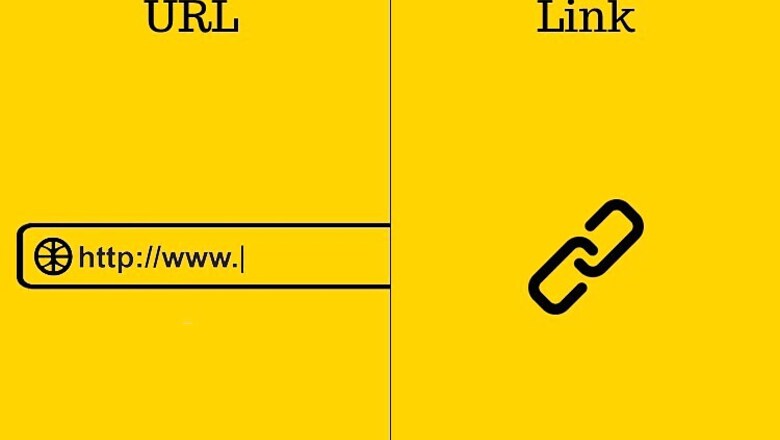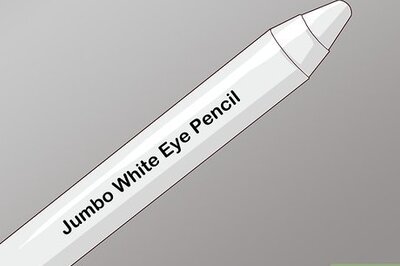
views
Be it Band-Aid or Velcro, the habit of genericising (using trademarks as generic product names) is something that refuses to go away even in this information age. In fact, there are a large set of technology-related words that are very frequently used interchangeably and those using it are often oblivious of their divergent meanings.
We have compiled a set of 10 pairs of tech terms that are not synonymous with each other but are nevertheless commonly used interchangeably by laymen, experts and even the media.
1. GIF and video
Any animation that you find on the web moving around in a loop isn’t necessarily a GIF. It could very well be a video, either playing on a loop or not. Also not all Graphics Interchange Format (GIF) images are animated, a large number of GIFs on the Web are still and unmoving.
Animated GIFs are a set of images created through software that display one after another to give an appearance of movement. The animation can play endlessly on a loop or stop after a pre-set interval.
Just like GIFs, a video can also be run on a loop, but that doesn’t make it a GIF. Also videos can come with accompanying audio, something that the GIF format doesn’t support.
Having said that, an increasing number of Web services are converting GIF images into HTML5 videos to optimise their size and playback.
2. Twitter account and Twitter handle

The other day, Hindi cinema’s biggest superstar claimed that his “Twtter handle” was hacked, when what Amitabh Bachchan would have actually meant was that his Twitter account was hacked.
People are very often heard saying “go to his Twitter handle” when they actually mean is “go to his Twitter account.” This is probably because many of us don’t understand that a Twitter account and a Twitter handle are two connected albeit different things.
Let’s understand this way, a Twitter handle is like the postal address of your house, whereas a Twitter account is your house in entirety. Similarly, a Twitter handle is the public address to a Twitter account (the internal Twitter addresses associated with each account is a long series of numbers). Therefore, it’s not very right to say, “I got this information from his Twitter handle.” Instead say, “I got this information from his Twitter account”.
Also for the same Twitter account, the handle can be changed, but the account remains (unless deleted).
3. Emoticon and emoji

Originally when we didn’t have picture-based icons to express our mood and emotions, we would express them only in a text medium. Let’s say, :) to represent a smiling face or ;) to represent a wink. These typographical display of facial representations were collectively called “emoticons”.
But eventually, pictorial icons were introduced which included not only symbols for our emotions, but also for our activities and words. For example, a dancer emoji or a nail painting emoji.These picture-based icons are collectively called “emoji”, but pictorial symbols that portray emotive faces are separated out and also labelled as “emoticons”. Therefore, some emoji can be called emoticons. In other words, every emoticon is an emoji, but every emoji is not an emoticon.
To sum up, emoticons are typographical and pictorial display of emotive faces, while emoji are a set of pictorial icons - which also include emoticons.
4. Earphones and headphones

The terms earphones and headphones are today used interchangeably, that isn’t considered to be incorrect. But it is more appropriate to use the term ‘earphones’ for those that fit into your ears and ‘headphones’ for those that fit across your head and rest upon/around your ears.
5. Internet and Web

While many people assume the Internet and the Web to be the same thing, they are, however, not. Let’s understand the difference without getting into the technicalities. If the internet is a restaurant, the Web is the most popular food item on its menu. If the Internet is a highway, the Web is a large section of traffic on it.
To help you understand even better, the World Wide Web (or the Web in short) is a bunch of Web pages connected to each other across the globe, while the Internet is a network of networks over which information travels around the world.
6. Video clip and MMS

A leaked video clip with sexually explicit content is often termed as an “MMS” (precisely an MMS message), which is not always correct. It actually may or not be an MMS (message).
Only those multimedia files (including video and audio clips) can be termed MMSes (MMS messages) that have been sent over MMS - a service to send multimedia content to and from mobile phones.
Therefore, a video clip is an MMS (message) only if it has been sent via the MMS service.
P.S: A video clip (especially with lewd content) is not always an MMS and not all MMSes contain explicit content.
7. At and at the rate

In contemporary usage, the symbol @ has different meanings depending on where it is used. The symbol @ means both “at” and “at the rate of”, and therefore you should be careful when spelling out your email address (or your Twitter handle). For instance, if your email address is [email protected], speak it as youname (at) example dot com, and not yourname (at the rate of) example dot com. The ‘@’ symbol in an email address tells at which domain the user is located. But the same symbol becomes an abbreviation for “at the rate of”, where you are describing say, the price per unit of a commodity.
8. URL and Link

The correct term to use for the address of a Web page is URL, and not the link. A link on the Web is an element that connects information (including text, audio, video) in a document to another set of information on the same Web page or elsewhere.
9. Trolling and criticism
A difference of opinion is not trolling. A rude remark is not trolling. A sarcastic comment is not trolling.
Trolling is, in fact, the use of words, phrases, statements, emoji, memes or other ways of communication tools that intend to make participants deviate from an original discussion into a needless argument.
Also the use of cuss words in an argument is not always trolling unless it aims to lead participants astray.
Also you wouldn't necessarily be trolling us if you think different about this post.
10. Mozilla and Firefox

Mozilla is a company, not a browser. Their browser is Firefox. A browser crashes somewhere everytime you say, “open that Web page on Mozilla.” You never say Microsoft when you mean Internet Explorer. Do you?




















Comments
0 comment